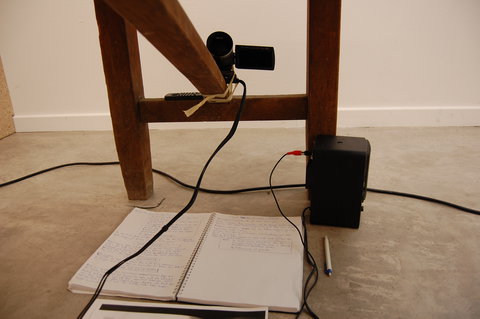
The poor accessibility of documents and artefacts of performances created between c. 1970 and today has clearly impeded and even prevented the transmission and communication of performance art, at least in Switzerland. Practice-oriented and artistic research can shed light on actions which can in turn serve as inspiration for theoretical and practical transcriptions as well as be used to build a prospective performance archive.
The field of performance theory is broad, complex and rife with controversies. The following statements, each representing a specific viewpoint within the theoretical discourse, served us as a guide and marked out a frame of reference for our observations.
Firstly, Barbara Clausen, quoted below, underlines the reciprocal nature of performativity and mediality.
“The claim at the heart of this publication is that engaging with performance art does not start and end with the authentic experience but, contrary to its ontological origin myths, is to be understood as the ongoing process of a contingent reciprocity between event, mediatisation and reception.”[1]
The following quotation also stresses the close connection between the live moment and its medial ‘relics’. According to Rebecca Schneider, performance itself can be seen as a kind of document because and by the fact that it transmits cultural practices. Equally, a document can be attributed with performativity.
“When we approach performance not as that which disappears (as the archive expects), but as both an act of remaining and a means of reappearance (though not a metaphysics of presence) we almost immediately are forced to admit that remains do not have to be isolated to the document, to the object […].”[2]
The third statement by Barbara Büscher describes the archive as a collection of medial transcriptions, the accessibility of which forms the precondition for transmitting performance art.
“These fields of inquiry make it clear that it can no longer be the re-calling (or irrevocable loss) of performative authenticity that is the focus of discussion. The programmatic lack of traces, which for a long time was regarded as a defining feature of performance and its subversive qualities, is being called into question in and through the artists’ own archives. Eyewitness accounts can (now) not be regarded as the only source of future knowledge of past events. The relationship between performance and its remains can not be perceived as that of original and replicable documents but as a medial transformation. Work on the performance (art) archive transforms ‘disappearance’ into manifest medial artefacts of varying provenance.”[3]
[1] Translated from the German: „Das dieser Publikation zu Grunde liegende Bekenntnis besteht darin, dass der Umgang mit Performancekunst nicht mit dem authentischen Erleben anfängt und sogleich endet, sondern entgegen seinen ontologischen Ursprungsmythen als fortlaufender Prozess eines kontingenten Wechselverhältnisses zwischen Ereignis, Medialisierung und Rezeption zu verstehen ist“, in: Clausen, Barbara, „After the Act. Die (Re)Produktion der Performancekunst“ in: Clausen / Museum Moderner Kunst Stiftung Ludwig Wien (eds.), After the Act, Die (Re)Produktion der Performancekunst, Verlag für Moderne Kunst, Nuremberg 2006, p. 7-8.
[2] Schneider, Rebecca, “Performance Remains”, in: Performance Research, 6(2), 2001, p. 103.
[3] Büscher, Barbara, “LOST & FOUND. Performance und die Medien ihres Archivs / Lost & Found. Archiving Performance”, in: MAP media | archive | performance 1/2009, p. 4, http://perfomap.de (last accessed 3.5.2010).